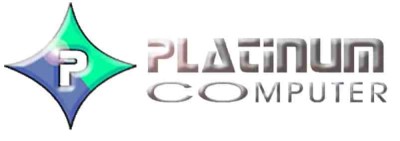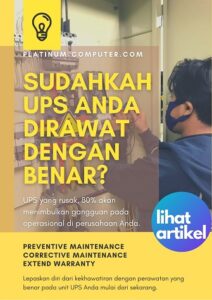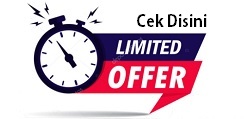Rockware RockWorks 2022 Environmental
RockWorks is a comprehensive software program for creating 2D and 3D maps, logs and cross sections, geological models, volume reports, and general geology diagrams for the environmental, geotechnical, mining, and petroleum industries.
RockWorks is the standard in the environmental, geotechnical, petroleum, and mining industries for surface and subsurface data visualization, with popular tools such as maps, logs, cross sections, fence diagrams, solid models and volume calculations.
RockWorks offers numerous options for analyzing your surface and subsurface data, and accepts many different data types, such as stratigraphy, lithology, downhole geochemistry / geophysics / geotechnical measurements, color intervals, fractures, and aquifer data.
Display RockWorks graphic output in its built-in 2D and 3D viewing/editing windows, or export to CAD, Google Earth, and other GIS programs. Use the ReportWorks module to create page layouts for reports and posters.
RockWorks is offered with three feature levels so you can buy just the program tools you need:
– Basic: All Utilities programs, plus Borehole Manager maps, logs, log sections. 5 items per playlist, 3 faults.
– Standard: All Basic level tools, plus Borehole Manager modeling: lithology, stratigraphy, geophysical/geochemical/geotechnical, aquifers, colors, fractures. 5 items per playlist, 3 faults.
– Advanced: All Standard level tools, plus SQL-server database support, program automation (scripting), Borehole Manager petroleum production diagrams. Unlimited items per playlist, unlimited faults.
RockWorks is a comprehensive program that offers visualization and modeling of spatial data and subsurface data. Whether you are a petroleum engineer, environmental scientist, hydrologist, geologist or educator, RockWorks has what you need.
RockWorks contains tools that will save time and money, increase profitability and provide you with a competitive edge through high-quality graphics, models and plots.
ROCKWORKS FEATURES RockWorks 2022 :
All of the modeling and graphic power of RockWorks is now offered with the easy-to-use Playlist for program automation, time-based modeling and animation, updated search tools, and many other new features and functionality.
1. Program Automation
The new RockWorks Playlist offers easy automation – just click a button to add a program to the current Playlist. Then, click a button to run your Playlist to create models, maps, diagrams while you have lunch. Available for Basic (5 items), Standard (5 items) and Advanced (unlimited items).
The Playlist provides:
– Turn-key tools for colleagues or clients who need to use RockWorks capabilities without any downtime spent learning how to use it.
– A memory aid for projects that are infrequently re-visited.• An audit trail to serve as a record of what was done and all of the associated menu settings.
– Automation of data processing in which new data is being introduced on an ongoing basis (e.g. resampling and monitoring).
– A template for processing different data sets/sites using a streamlined workflow.
Recent Playlist Improvements :
– Launch an external program from within the Playlist to automate data transfer.
– Load dimensions from a sub-site within the project, and from a saved coordinate list.
– Easier navigation with multi-select cut/copy/paste.
– Playlist Button: Add the current application to the Playlist.
– Favorites Button: Add the current application to your Favorites List.
– Output Options: Export diagrams and reports directly to the desired output format.
New RockWorks Command Scripting for Advanced users – start with a Playlist and go for it!
2. Improved Faulting Tools
Use the new Faults tab in the main program window to manage 2D and 3D faults in a single database table.
Import faults from a variety of sources, including:
– Lines and polylines in the RockWorks datasheet or drawn on a map
– XYZ points, dip direction, dip angle, and up/down projection distances listed in the datasheet
– XYZ triangles in the datasheet
– RockWorks grids
– RockWorks17 fault tables and fault files
– Transfer faults between projects, import/export to Excel and text.
Apply Faults
– Click the Faulted check-box in the Gridding Options or Solid Modeling Options tabs to apply the enabled faults to the modeling process.
– Fault names are embedded in model metadata.
– Grid smoothing honors fault barriers
Display Faults – plot enabled faults in…
– 2D maps showing all fault triangles, or intersections with a plane or a surface. 2D fault maps are offered as a standard layer in all other RockWorks maps.
– 2D cross sections and profiles and projected section diagrams.
– 3D scenes as panels using the colors and fill defined in the table. 3D fault displays are offered as a standard layer in all other programs which generate 3D output.
3. Interface Features
– Search option lists the programs that contain your search terms.
– Favorites Option: Create your own menu list of frequently-used programs
– Borehole Manager Tab: New features including database comparisons.
– Playlist Tab: Automate multiple tasks in an interactive fashion.
– Faults Tab: Redesigned to manage all faults in 3D as a database.
– Dock/Undock: Arrange main RockWorks program tabs in any configuration.
– Full-Expand Option: Stretch the main RockWorks menu across multiple screens.
– Expanded Project Dimensions Summary: View more information at a glance.
– Update Project Dimensions using a rectangle drawn on a map.
– New Layout Options: Save and retrieve up to 5 different main menu layout configurations.
– Execution History Tab: Review program history to diagnose problems.
– Videos Tab: Access the entire library of RockWorks instructional videos.
– Application Descriptions: Read program abstracts as you move your cursor over items within the pull-down menus.
– Consolidated Application Menu Ribbon: No more switching between program tabs.
4. Application Windows
– Nested Tab Menus: Replace hard-to-read expanding/collapsing menu trees.
– Expanded Spatial Filtering: Moved to the top of the menu and now applied to most applications.
– Expanded Time Filtering: Moved to the top of the menu and now applied to most applications.
– Instructions Checkbox: Enable/disable help messages.
– Restore defaults: Restore default settings for individual menus.
Programs that read data from the Datasheet now include an Example button, which will list one or more sample files that can be used to demonstrate the application.
Diagram Embellishments
To eliminate additional steps in combining and appending diagrams, common embellishments have been added to the programs that create sections, profiles, projected sections, maps, 3D diagrams and charts.
– Sections, Profiles & Projected Sections – Additional diagram layers include perimeter annotation, surface profiles, faults, infrastructure, up to five 2D graphics overlays, peripheral annotation (titles, title blocks, legends, and image), and a border.
– Maps – Additional map layers include a background image, labeled axes, map overlays, up to five additional 2D diagrams, peripheral annotation (titles, title blocks, legends, scalebar, and image), and a border.
– 3D Diagrams – Additional 3D layers include striplogs, draped images, floating images, control point spheres, a perimeter cage, legends, 3D infrastructure, 3D faults, and up to five additional 3D diagrams.
5. Expanded Output Options
2D, 3D, Google Earth, and Reporting programs now include output and export options that remove post-processing steps and facilitate uninterrupted Playlist scripting.
– All programs that generate 2D diagrams now include options for simultaneously exporting the output to PDF (as raster images) and/or PNG.
– New 3D output tab includes options for exporting the diagram to a PNG image using a variety of user-specified viewing parameters.
– New Google Earth output tab includes options for specifying the initial viewer location and viewing direction.
– Programs that create reports now provide options for direct output to CSV (Excel), Txt (Notepad) or RTF (Word).
– Striplogs – PDF Bulk Exporter – All of the boreholes within a database can now be exported in one step to a multi-page PDF (as raster images) file that can serve as a report appendix.
6. Modeling Features
– Time-Based Modeling – New T-Data Multiple Solids program automatically creates “snapshot” models at designated time intervals which can be constrained by a permeability model and output to a variety of animation programs. Refer to the TCE Site sample project and tutorial.
– New Automatic Polygon Clipping – All gridding and solid modeling programs now include an option for clipping the model based on an automatically-defined convex polygon defined by the control points, analogous to stretching a rubber band around the boreholes.
– Clip Grid Models using polygons in a table or a map.
– New Spatial Filtering – All programs that involve coordinates now include a spatial filtering option so that subsets (including zones between surfaces) can be selectively analyzed/modeled.
– New Time-based filtering options have been added to the Hydrochemical utilities (i.e. Durov Diagrams, Piper Diagrams, Stiff Diagrams and Stiff Maps) as well as any programs that might include striplogs (in order to filter water levels and/or T-Data).
– Create a depth to target grid model for specified values in a solid model.
– Calculate where two grids intersect, such as a water table and surface topography.
– Import 5 meter DEMs to a RockWorks grid model.
– Create a solid model in which the voxel values between two surface model grids are defined by another grid (e.g. ore grades).
7. Animations
New animation tools have been added for creating videos in which XYZ data, grids, and solids are transitionally “morphed” to show geochemical migrations over time. The output can be saved to AVI, Animated GIF, MP4, WMV, individual frames or exported as a Google Earth animation.
– Solid model reveal animations offer starting view, zoom, stretch, colors, and more. Include up to 12 different changes of direction.
– Solid isosurface animations offer 6 cutoff levels for finer detail.
– Automatically hide time-data striplogs with no data for the sampling date.
– Processing speed has been improved by 30%
8. Other Map and Diagram Features
– Borehole Location Maps – Display maps symbols from the database, or used fixed symbols.
– 3D Cylinders – Specify the number of sides in 3D cylindrical entities (such as logs) for faster display and smaller export.
– Display multiple surface profile polylines (such as ground surface AND water table) in cross sections.
9. Reporting Features
– Create a report that lists the change in mass of a contaminant over time, from a list of time-specific geochemical solid models.
– Restrict graphs and reports for subsurface quantitative data based on lithology types or stratigraphic units.
– Output a list of files/entries in the Project Manager.
– New report formatting and export options.
RockWorks 2022® – Environmental
Borehole logs, cross sections, concentration maps, plume models, geology models, time-based animations, geochemistry diagrams and more. RockWorks will help the environmental professional along the path from site characterization to remediation planning and execution.
RockWorks 2022 Environmental
1. Mapping Tools
• Borehole location maps with detailed data labels
• Contaminant concentration maps with lines and color fills, custom color tables, date filters
• Plan- and surface-based slices from 3D models
• Stiff diagram maps
• Time-graph maps for user-selected analytes
• Potentiometric surface maps
• Flow maps in 2D and 3D
• Coordinate systems/conversions: lon/lat, UTM, State Plane, local, custom
2. Borehole Database Tools
• Cross sections: multi-panel projected and hole to hole, with borehole logs and/or interpolated panels
• Correlations: model-based and “EZ” panels, snapping tools for hand-drawn correlations
• Borehole logs in 2D and 3D
• 3D fence diagrams
• Surface modeling of stratigraphic layers and water levels
• Plume modeling of analytical data, with display as voxel or isosurface diagrams, 2D plan and section slices
• Solid modeling of lithologic materials, geophysical and geotechnical measurements
• Volume reports of lithologic and stratigraphic models, contaminant extraction models
• Bulk data imports from Excel, text, LAS, other databases
3. Other Tools
• Time-based animations
• Piper and Durov diagrams with TDS circles, Stiff diagrams for multiple samples
• Water level drawdown diagrams and surfaces
• 2D editing tools: contour lines, text, shapes, legends, images
• Composite scenes in 3D with maps, logs, surfaces, solids, panels, surface objects
• Page layout program for small to large format presentations and posters
• Exports to GIS Shapefiles, CAD DXF, raster formats, Google Earth
• Image import and rectification
• Program automation
• Google Earth output directly from data: points, cones, lines, polygons, images, flyovers
Important Keys :
Rockware RockWorks 2022 Environmental, jual RockWorks 2022 Environmental, harga RockWorks 2022 Environmental, beli RockWorks 2022 Environmental,




